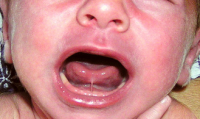Q: How do you stimulate for tongue stability at the back-lateral margins when a child is too young to understand what you are talking about? That is a great question. The position of tongue stability is the same as Long E, as in the word “bee.” So with the little guys, I don’t try to explain it. I just over work Long E for a very long time. These are the types of things I do: Overwork the diminutives: kitty,…
Tongue Stability
By Pam Marshalla

